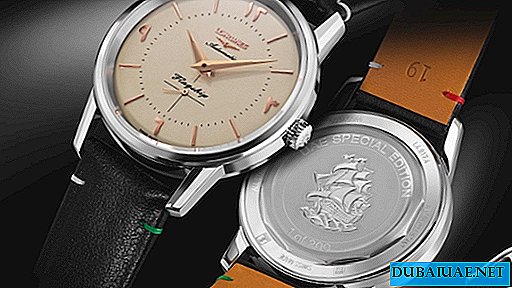 ONCE YOU HAVE BEEN IN MYANME, WHICH BEFORE EVERYBODY HAS BEEN CALLED BY BIRMA, YOU WILL UNlikely BE ABLE TO FORGET IT. THE MAIN THING IN THE LIFE OF EACH BIRMAN IS NOT TO RESIST THE NATURAL EVENTS AND LIVE IN ACCORDANCE WITH NATURE. THESE FEELINGS ARE SETTLE IN YOUR HEART WHEN YOU COME TO THIS COUNTRY.
ONCE YOU HAVE BEEN IN MYANME, WHICH BEFORE EVERYBODY HAS BEEN CALLED BY BIRMA, YOU WILL UNlikely BE ABLE TO FORGET IT. THE MAIN THING IN THE LIFE OF EACH BIRMAN IS NOT TO RESIST THE NATURAL EVENTS AND LIVE IN ACCORDANCE WITH NATURE. THESE FEELINGS ARE SETTLE IN YOUR HEART WHEN YOU COME TO THIS COUNTRY.
Big stupa
The airport of Yangon resembled the airport of Sochi in the early 90's. The semi-illuminated streets of the city, blackened concrete houses, the absence of any hint of road traffic created the complete impression that you are in a godforsaken country. However, the unexpectedly opened view of the majestic golden temple of Shwedagon, the main shrine of Myanmar, conquered forever.
This pagoda, which stores the four hairs of Buddha, has long been called one of the new wonders of the world. One hundred and ten meters of blinding gold leaf surrounded by countless stupas or pagodas brings less to the world of mystical experiences. Underfoot warm marble, incense perfumes are spread in the air and the echo of prayers is carried. Everywhere there are large and small statues of Buddhas, whose faces are somewhat different from traditional ones: they have a narrower and longer nose and expressive vibrant eyes, often framed by long thick eyelashes. At the back of each Buddha’s head is a circle in which waves of illumination diverge. That is how, in the view of the Burmese, divine radiance emanates from the head of the great saint. Such an unexpected combination of ancient religiosity and modern technology looks so accurate that you involuntarily think about it, why did not come to this in other countries.
With the sunset at the peak of the Shvedagon, a 76-carat diamond flashes, which, like a torch, flickers in the dark sky. More than 4 thousand smaller diamonds, and the same number of sapphires, rubies and jades, crown the top spire of the pagoda.

The Shwedagon like a magnet attracts Buddhist monks and pilgrims to them. They come to this sacred place to indulge in meditation, glue the gold foil on the stupa and leave flowers at the pillars of heaven as a gift. According to Burmese astrology, a week consists of eight days (Wednesday is divided into two days), each of which is associated with a particular animal. Depending on the day of the week on which the person was born, he prays, and also leaves offerings at the corresponding altar.
All other Myanmar pagodas to one degree or another copy the Shwedagon. The conical shape of the golden pyramid with a carved cap of ringing bells, designed to drive away evil spirits with their sound, is sometimes found here more often than palm trees. It is not for nothing that the rulers and inhabitants of this country for centuries have only done what they built temples, and only secondarily thought of themselves.
Everywhere on the streets of the city you see traders of sparrows. I want to run to Greenpeace from one type of crouching and plaintively chirping birds in the cage, but they explain to you that everything here has a sacred meaning. For little money you can buy and release a sparrow, thereby allegorically freeing your spirit and mind from the shackles of the material world. Despite the fact that merchants specially feed sparrows and after gaining freedom, they return to their cages themselves, the Burmese themselves often buy this trick. Release is still more important.
Myanmar does not begin to penetrate the soul immediately. She gradually envelops you with a soft web of a completely different way of life. The Burmese are not in a hurry to let Western civilization into their original, centuries-old world that has not changed. They sacredly honor ancient traditions, venerating every full moon for a holy day, meditate on the face of Buddha, trying to adopt his serenity, and their life is closely connected with nature. The view of the bulls harnessed to the plow is the same unchanging part of the local landscape, like the Buddhist pagodas. The kindliness and benevolence of the indigenous population, their sincere desire to help and to please also bribes.
 The Lost Water World
The Lost Water World
Having kept in mind the golden image of the Shvedagon, we board the only acceptable transport in Myanmar, a turboprop ATR (something like our AN-24), which is ready to move us inland to the place of Heho, where Inle Lake is located. The appearance of propellers instead of turbines, of course, is alarming, but only when you fly for the first time. Then you start to love these flying buses (otherwise you will not name them) for the efficiency and smiling stewardesses.
In the vicinity of Heho is another place of pilgrimage-cave Pindaya with more than 8 thousand unique antique Buddha statues. A three-hour drive through the desert, where it seems that no human foot has ever set foot, suddenly ends in a picturesque temple complex with a modern glass elevator. We go up and go into the cave, where there is no one except us. Inside, through the dim light, along with millennial stalactites, silhouettes of thousands of gilded Buddhas loom. A narrow trail wanders through the cave, like a maze. You do not leave the thought that you are here all alone and, if something happens, you are unlikely to get to the exit yourself. But it’s too late, and, driven by primitive fear and the beauty of a pacified Buddha, we barefoot go into the depths of the cave along the damp stone floor. From above, from the side, from below, slanting eyes look at us, like sphinxes watching our movement. In the depths of the cave, between small lakes and illuminated Buddhist altars, in a narrow and inconspicuous passage, we see a meter-long hole in the rock above which the inscription "Cave for Meditation" hangs. As Winnie-the-Pooh once climbed to visit the Rabbit on four wheels (it doesn’t work out differently), we climb deep into the mountains and find ourselves in a cramped cave, the floor of which is covered with a red carpet. Before us is a statue of Buddha with the already familiar illumination behind his head. Silence and inner peace liberate the mind. It becomes easy. I want to stay here longer.

On the way back we are going to get acquainted with the local tribe of Padauns (in translation, “long-necked”), whose women prefer bronze rings on their neck to all other jewelry. The natives welcome us with a reserved smile. The members of this tribe, unlike many Burmese people, are endowed with some special self-esteem and, possibly, even superiority. Despite such peculiar self-torture, they believe in Jesus Christ and are not Buddhists at all. Girls put on the first ring at the age of 10 and add one each year. Toward the end of life, the length of the neck can increase to 40 centimeters. They say that in the case of infidelity to her husband, the rings are removed, the woman breaks her neck and dies.
Nearby is a local village school. Children half-dressed, snotty, barefoot. However, in one class, the teacher writes the Pythagorean theorem on the blackboard, and in another there is an English lesson at the 6th grade level of a Russian school. Not forgetting to give everyone pens, notebooks and felt-tip pens, we once again agree with each other that Myanmar is a country of contrasts.
And on the horizon, Inle Lake is already visible, located at an altitude of 900 m above sea level and surrounded by a mountain range. Right on the water, in shaky bamboo houses on stilts, a total of as many as 70 thousand people live, who in ancient times got into the water due to the devastating raids of the Shan tribes, and they stayed there. In addition to neighborhoods and streets, there are schools, monasteries, hospitals and temples on the water. Immediately from the roots of hyacinth and algae, artificial floating plantations where tomatoes, cucumbers and potatoes are grown are broken. And from the stems of the lotus growing on the lake, women weave scarves, in beauty and strength they are in no way inferior to the thinnest silk. Anyone who has purchased a similar scarf, specially then returns to order shirts and dresses made of the same material, he looks so beautiful and expensive.
The temperature on Inle, the length of which is 20 km, is one of the lowest in the whole of Myanmar; in winter it sometimes reaches +10 degrees Celsius. At the same time, the shacks are not insulated by anything, but are covered only with reed canopies. Nevertheless, in one area among black huts on a huge water lily, we suddenly noticed a round satellite dish. Apparently, even here there are rich people who, in those rare hours when they give electricity on the lake, still manage to watch television.
Apart from the antenna, nothing here reminds of this century. In the forges, blowing furs, forge iron, women squatting, turning cigars, fishermen from boats, skillfully rowing with one leg, catching nets with fish. Everything revives only once a week when a floating market arrives on the lake. Hundreds of boats sell everything you could wish for: food, souvenirs, clothes, gold. In this case, you can often dig up rare antiques for the meager money in our understanding. The Burmese may simply not know the real value of these gizmos, and given that their average salary is $ 50 per month, a couple of bronze sculptures sold will provide them with a full life in the near future.
 On the way to Mandalay
On the way to Mandalay
Unlike Heho Airport, where the flight schedule is written in chalk on a blackboard, Mandalay Airport seemed like a futuristic paradise. We walked in proud loneliness at the modern sparkling airport terminal, specially built by Italians for $ 150 million to receive transit flights from Singapore. A spinner was launched to issue a pair of backpacks, and all the airport staff tried to be at least somehow useful to us.
Mandalay, once praised by Kipling as a city where you definitely want to return, turned out to be noisy and chaotic. Along the city center stretches a carved wall of the imperial palace (Mandalay used to be the capital of Burma), surrounded by a moat of water. And from the famous Mandalay Hill, on which there is a temple with four huge Buddhas, looking at different ends of the world, offers a breathtaking view of tens of kilometers, strewn with thousands of white and gold stupas. In the vicinity of Mandalay there is also the largest active bell in the world (Moscow Tsar Bell is only in second place), and for aesthetes in the Kuthod pagoda surrounded by walking monks you can find the largest book in the world, where the main dogmas are engraved on 792 marble slabs Buddhism. In 1900, the text was reprinted on paper: 38 volumes of 400 pages were obtained. By the way, being a monk in Myanmar is very prestigious. According to tradition, at the age of 7, all boys are sent to study at the monastery for two years. After that, everyone decides whether to be his novice or worldly resident. But, being a monk, you will always be provided with housing and food, which is very important in this country.
 Holy ghost town
Holy ghost town
The motor ship from Mandalay, cutting the warm waters of the Irrawaddy River, brings us to Old Bagan, a UNESCO World Heritage Site. In the XI century, he also managed to visit the capital of the Burmese kingdom, and therefore is revered as a sacred place. Today Bagan, located on a wide bend of the river, is not even a city, but an entire archaeological zone with thousands of temples and pagodas and one of the most important Buddhist centers of Southeast Asia. You can go from temple to temple for weeks, meditate in front of the altars, study the ancient frescoes on the walls, climb the upper tiers along steep steps and enjoy the sunset. The huge abandoned city, which, according to legend, has been inhabited by ghosts for centuries, is now so developed in terms of tourism infrastructure that you can safely call it Burmese Monte Carlo, where in the evenings stiff Europeans even wear shiny stilettos. Luxury hotels with Asian colors are immersed in the shade of the spreading crowns of bodhi trees, and the view of the Irrawaddy River pleases the view with the beauty of mountains, golden stupas and leisurely plowing the blue expanse of fishing boats.
The magnificent landscape of the green plain, dotted with a string of Buddhist pagodas, and the feeling of peace they evoke remain for a long time in memory. Taking a horse-drawn cart and contemplating on the soft pillows all the splendor of sacred architecture, you can smoothly move from reality to the world of ancient extinct civilizations. So was that what we were driving for?
Text: Irina Malkova
Photo: Alexander Malkov












